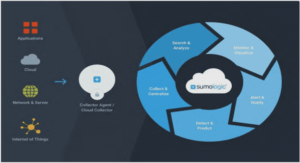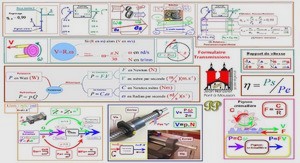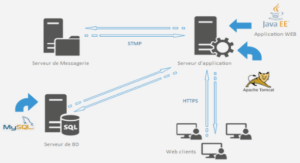Sommaire: Course Wireless Application Protocol Service Loading Specification
1.SCOPE
2.DOCUMENT STATUS
2.1COPYRIGHT NOTICE
2.2ERRATA
2.3COMMENTS
3.REFERENCES
3.1NORMATIVE REFERENCES
3.2INFORMATIVE REFERENCES
4.DEFINITIONS AND ABBREVIATIONS
4.1DEFINITIONS
4.2ABBREVIATIONS
5.INTRODUCTION
6.THE SERVICE LOADING CONTENT FORMAT
6.1SERVICE LOADING CHARACTER SET
6.2THE SL ELEMENT
7.SEMANTICS
7.1RECEPTION AND SERVICE INVOCATION
8.SECURITY CONSIDERATIONS
9.SL REFERENCE INFORMATION
9.1DOCUMENT IDENTIFIERS
9.2DOCUMENT TYPE DEFINITION (DTD)
10.A COMPACT BINARY REPRESENTATION OF SERVICE LOADING
10.1EXTENSION TOKENS
10.2ENCODING SEMANTICS
10.3NUMERIC CONSTANTS
11.EXAMPLE
12.STATIC CONFORMANCE REQUIREMENTS
12.1CLIENT FEATURES
12.2PUSH PROXY GATEWAY FEATURES
Extrait du course Wireless Application Protocol Service Loading Specification
1. Scope
Wireless Application Protocol (WAP) is a result of continuous work to define an industry wide specification for developing applications that operate over wireless communication networks. The scope for the WAP Forum is to define a set of specifications to be used by service applications. The wireless market is growing very quickly and reaching new customers and providing new services. To enable operators and manufacturers to meet the challenges in advanced services, differentiation, and fast/flexible service creation, WAP defines a set of protocols in transport, session and application layers. For additional information on the WAP architecture, refer to “Wireless Application Protocol
Architecture Specification” [WAP].
2. Document Status
This document is available online in the following formats:
• PDF format at http://www.wapforum.org/.
2.1 Copyright Notice
© Copyright Wireless Application Forum Ltd, 1998, 1999.
Terms and conditions of use are available from the Wireless Application Protocol Forum Ltd. web site at
http://www.wapforum.org/docs/copyright.htm.
2.2 Errata
Known problems associated with this document are published at http://www.wapforum.org/.
2.3 Comments
Comments regarding this document can be submitted to the WAP Forum in the manner published at http://www.wapforum.org/.
3. References
3.1 Normative references
[RFC2119] « Key words for use in RFCs to Indicate Requirement Levels », S. Bradner, March 1997.
URL: http://www.ietf.org/rfc/rfc2119.txt
[WAE] “Wireless Application Environment Overview”, WAP Forum, 04-Nov-1999,
URL: http://www.wapforum.org/
[WBXML] “WAP Binary XML Content Format”, WAP Forum, 04-Nov-1999,
URL: http://www.wapforum.org/
[WML] “Wireless Markup Language”, WAP Forum, 04-Nov-1999,
URL: http://www.wapforum.org/
[XML] “Extensible Markup Language (XML)”, W3C Recommendation 10-February-1998, REC-xml-
19980210”, T. Bray, et al, February 10, 1998. URL: http://www.w3.org/TR/REC-xml
3.2 Informative references
[PushOTA] “WAP Push OTA Specification”, WAP Forum, 08-Nov-1999
URL: http://www.wapforum.org/
[PushPAP] “WAP Push Access Protocol Specification”, WAP Forum, 08-Nov-1999
URL: http://www.wapforum.org/
[RFC2396] “Uniform Resource identifiers (URI): Generic Syntax”, T. Berners-Lee, et al., August 1998. URL:
http://www.ietf.org/rfc/rfc2396.txt
[WAP] “Wireless Application Protocol Architecture Specification”, WAP Forum, 30-Apr-1998
URL: http://www.wapforum.org/
4. Definitions and Abbreviations
4.1 Definitions
The following are terms and conventions used throughout this specification.
The key words “MUST”, “MUST NOT”, “REQUIRED”, “SHALL”, “SHALL NOT”, “SHOULD”, “SHOULD NOT”,“RECOMMENDED”, “MAY”, and “OPTIONAL” in this document are to be interpreted as described by [RFC2119].Application – A value-added data service provided to a WAP Client. The application may utilise both push and pull data transfer to deliver content
Application-Level Addressing – the ability to address push content between a particular user agent on a WAP client
and push initiator on a server.
Bearer Network – a network used to carry the messages of a transport-layer protocol between physical devices.
Multiple bearer networks may be used over the life of a single push session.
Client – in the context of push, a client is a device (or service) that expects to receive push content from a server. In the
context of pull a client, it is a device initiates a request to a server for content or data. See also “device”.
4.2 Abbreviations
For the purposes of this specification, the following abbreviations apply.
CPI Capability and Preference Information
DNS Domain Name Server
DTD Document Type Definition
HTTP Hypertext Transfer Protocol
IANA Internet Assigned Numbers Authority
IP Internet Protocol
OTA Over The Air
PAP Push Access Protocol
PI Push Initiator
PPG Push Proxy Gateway
QOS Quality of Service
RDF Resource Description Framework
RFC Request For Comments
SGML Standard Generalized Markup Language
SI Service Indication
SIA Session Initiation Application
SIR Session Initiation Request
SL Service Loading
5. Introduction
The Service Loading (SL) content type provides the ability to cause a user agent on a mobile client to load and execute a service that, for example, can be in the form of a WML deck. The SL contains a URI indicating the service to be loaded by the user agent without user intervention when appropriate.
…….
Course Wireless Application Protocol Service Loading Specification (186 KO) (Cours PDF)




